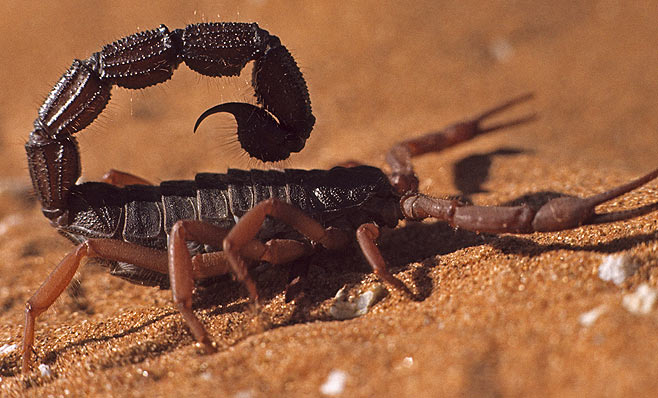|
Parabuthus villosus (Black
hairy thick-tailed scorpion) Life
> Eukaryotes
>
Opisthokonta >
Metazoa
(animals) > Bilateria > Ecdysozoa > Panarthropoda > Tritocerebra >
Arthropoda > Arachnomorpha > Cheliceriformes > Chelicerata > Euchelicerata
> Arachnida > Scorpiones
(scorpions)
> Superfamily: Buthoidea > Family: Buthidae >
Parabuthus
 |
|
Parabuthus villosus specimen from Namib
Desert. [photo H. Robertson ©] |
The Black
hairy thick-tailed scorpion is large, about 140 mm in length and is black in
colour. It is often seen during the day and is common from the Northern Cape
and Namibia. Besides its normal prey it also captures lizards and mice.
Robertson et al. (1982) showed that water loss in this
species was very low and furthermore that there was good evidence of
osmoregulation such that the osmolarity of the haemolymph remained much the same
with increased weight loss (mainly from dehydration) whereas in
Opistophthalmus capensis, which was also studied, osmolarity of the
haemolymph increased with weight loss.
Publications
-
Robertson, H.G., Nicolson, S.W. & Louw, G.N. 1982.
Osmoregulation and temperature effects on water loss and oxygen consumption
in two species of African scorpion. Comparative Biochemistry and
Physiology 71A: 605-609.
Text by Norman Larsen and Hamish Robertson
© |
